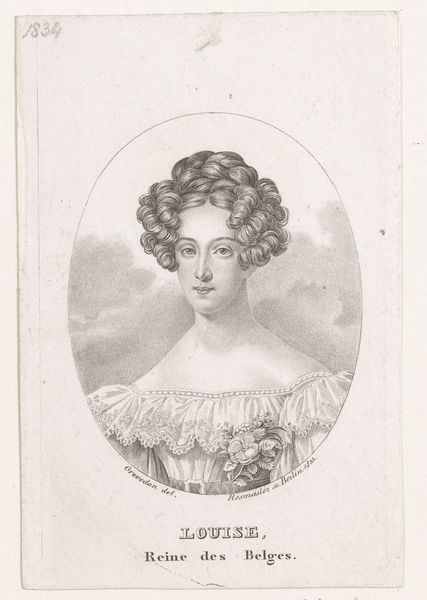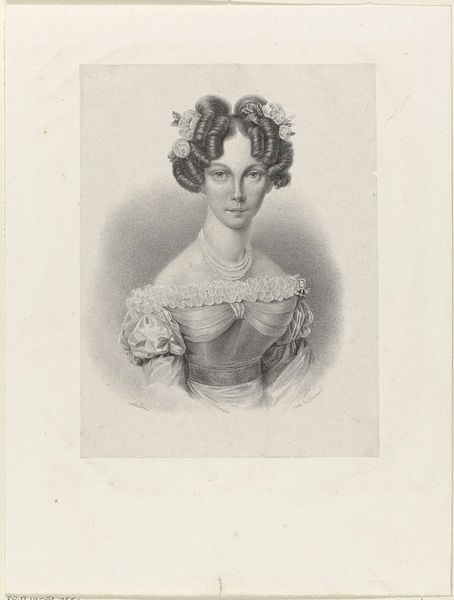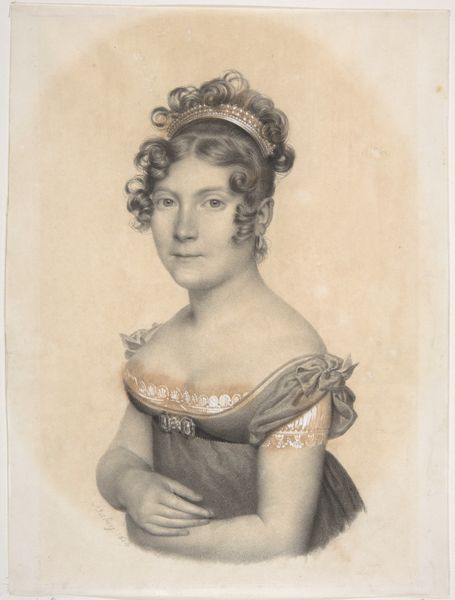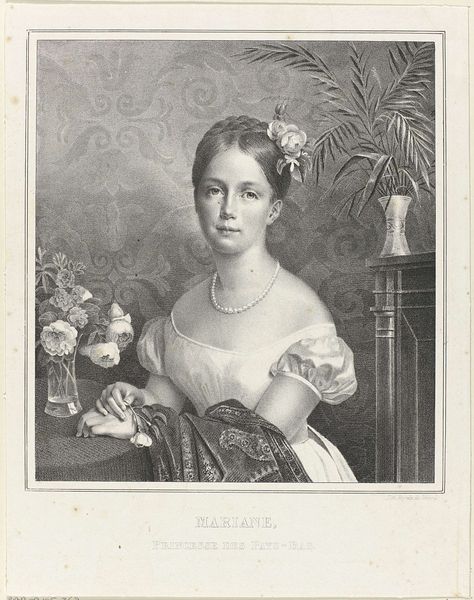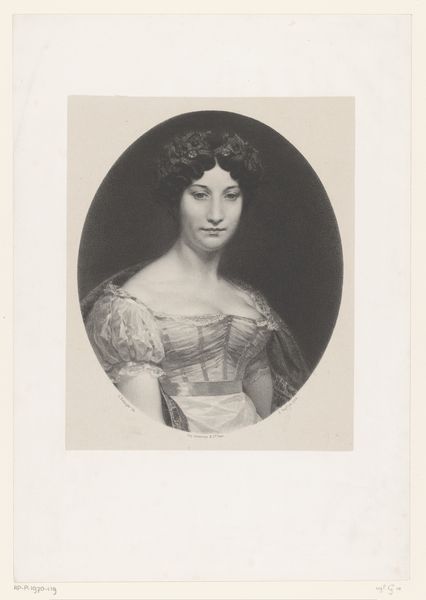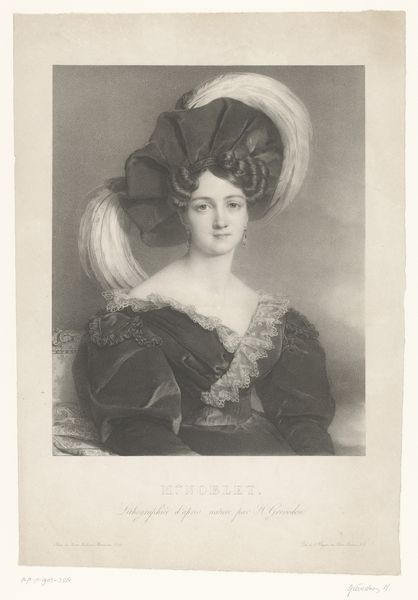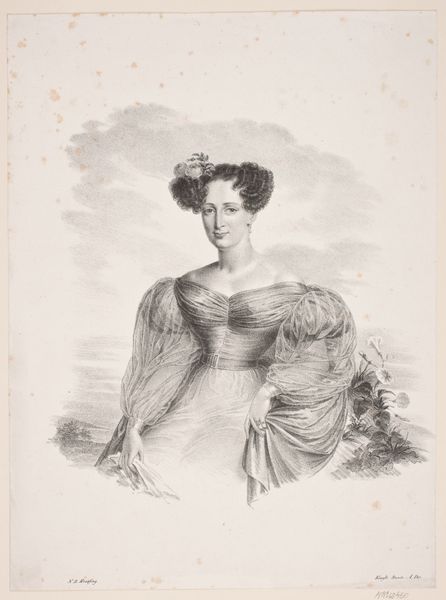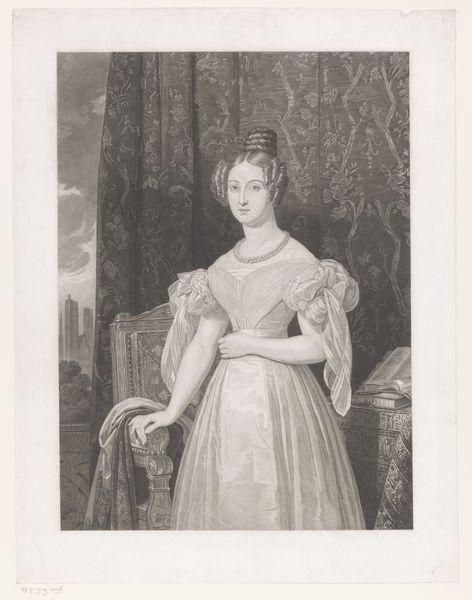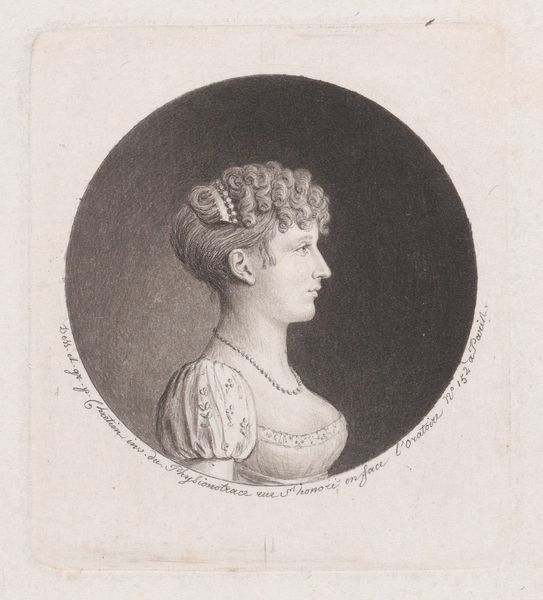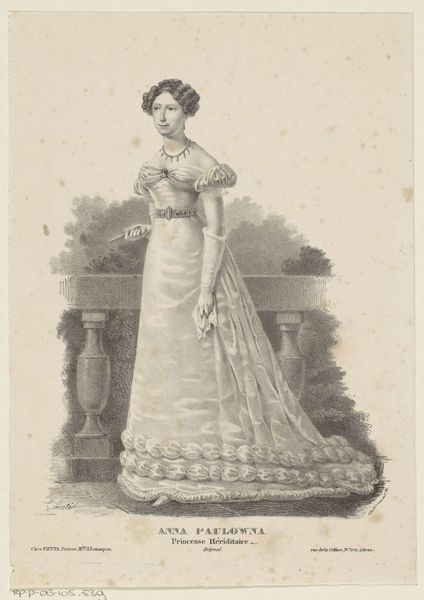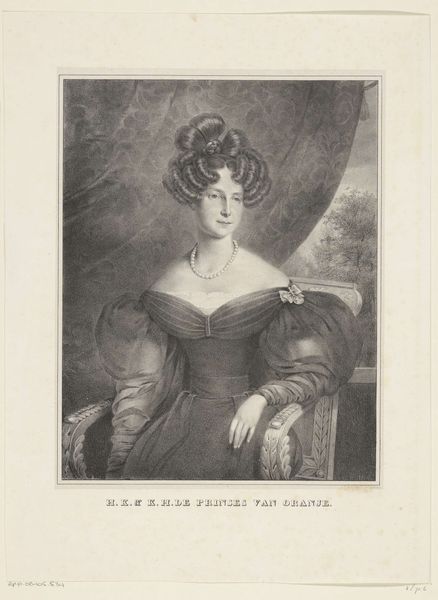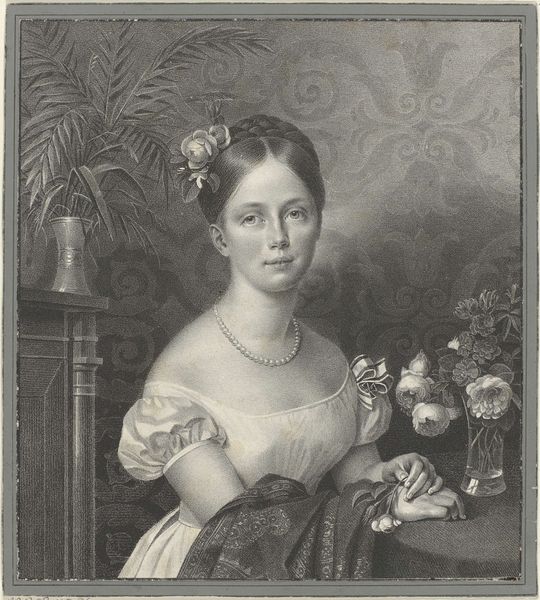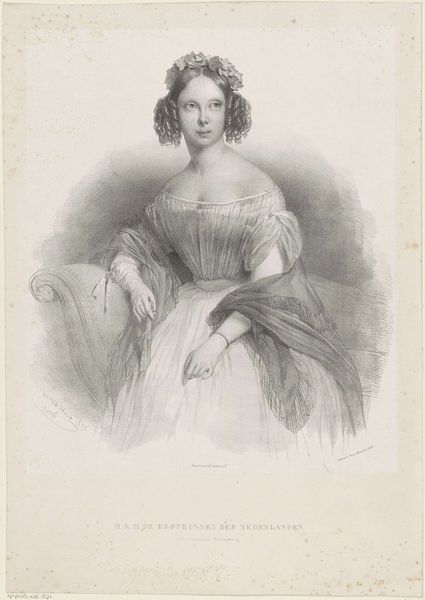
drawing, print, paper, engraving
#
portrait
#
pencil drawn
#
drawing
#
neoclacissism
# print
#
charcoal drawing
#
figuration
#
paper
#
pencil drawing
#
19th century
#
line
#
portrait drawing
#
academic-art
#
engraving
Dimensions: height 342 mm, width 255 mm
Copyright: Rijks Museum: Open Domain
Curator: This is a portrait of Louise of Prussia, crafted around 1825 by Franz Krüger. It's currently held at the Rijksmuseum and rendered as an engraving, which gives it this striking graphic quality. Editor: My first thought is just how…serene she looks. There’s a gentleness, a quietness. It's almost photographic in its realism. Not quite a painting, but more than just a simple line drawing. It feels like a moment captured. Curator: Yes, that stillness is key. Consider the floral crown, the strings of pearls – these were all carefully chosen symbols. The flowers often speak to feminine virtue and transient beauty, while pearls suggest purity and status. Krüger expertly manipulates these signifiers. Editor: Absolutely! I can also appreciate how it subtly merges Neoclassical composure with an emergent Romanticism. It feels staged, but it avoids feeling stiff or artificial. Instead, I see the beginning of a kind of self-awareness of being observed. Curator: Precisely. She isn't just a symbol of dynastic power; Krüger allows us to see a woman situated within a changing world. The architectural elements in the background, likely evoking Berlin, serve as both a reminder of her station and an environment within which she resides. Notice also the inclusion of floral and natural elements in the left background to frame her subject in an interesting dynamic. Editor: That blending makes it surprisingly modern, in a weird way. You have these classic markers of rank and wealth, but in a much more toned down fashion than we saw a century earlier. It seems she’s making herself relatable somehow, even with the frilly get-up. I bet that was calculated! Curator: That perceived relatability would have been advantageous, certainly. In an era of shifting social structures, projecting accessibility was a clever form of maintaining influence. As engraving allowed for the wide dissemination of printed material, images like this secured visual propaganda, for a modern audience, Editor: It’s like she's saying, "I'm royalty, but I'm also, like, just a person." Which is always a fascinating act. Anyway, I think the print makes her look almost contemporary; in fact, if she got rid of the hair and flowers, she’d look right at home in Instagram. Curator: The timelessness of her presentation is perhaps one of the reasons it remains such a captivating piece, transcending its initial political and social context. Editor: True. Who knew propaganda could look so...good?
Comments
No comments
Be the first to comment and join the conversation on the ultimate creative platform.
